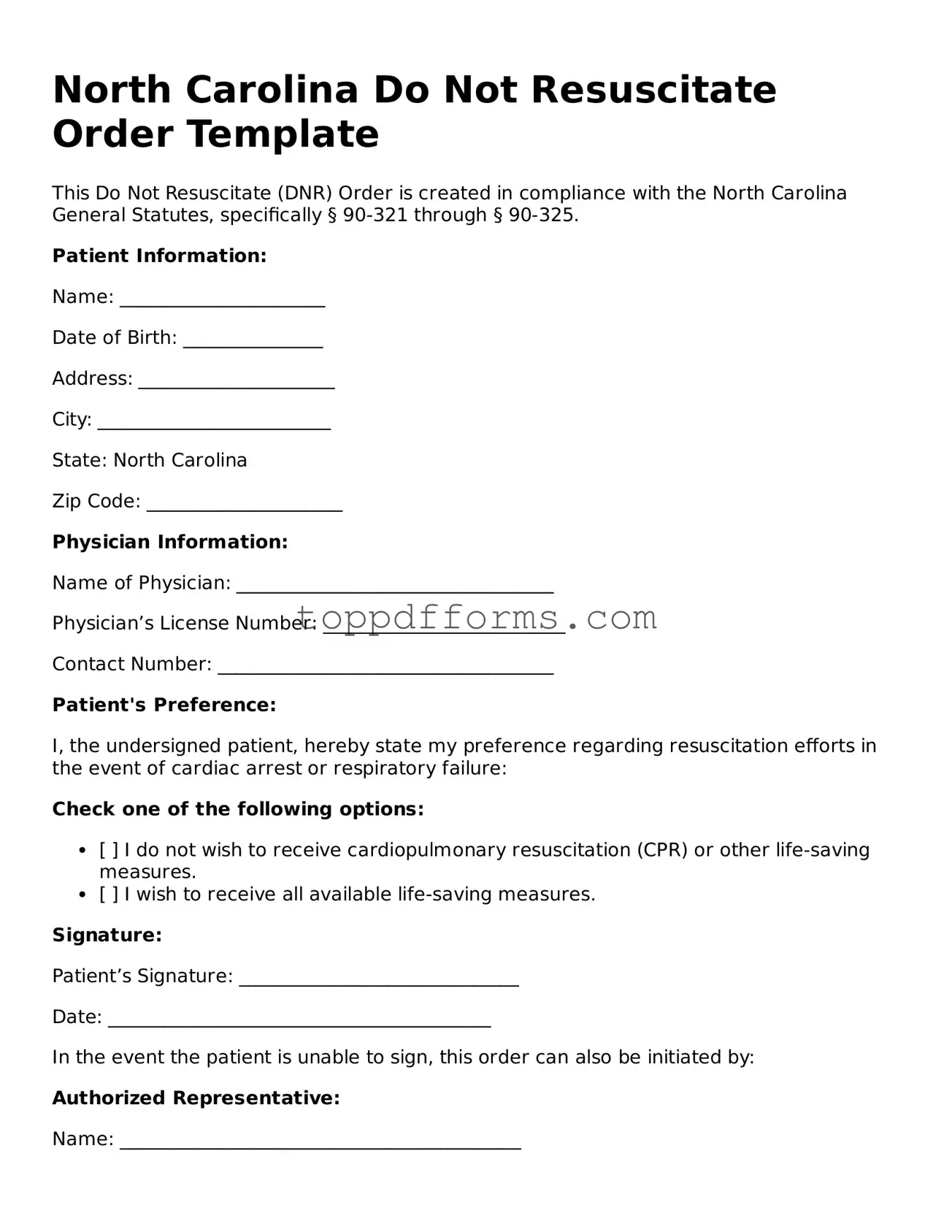What is a Do Not Resuscitate (DNR) Order in North Carolina?
A Do Not Resuscitate Order is a legal document that allows individuals to refuse cardiopulmonary resuscitation (CPR) and other life-saving measures in the event of a medical emergency. In North Carolina, this order is particularly important for those who wish to avoid aggressive interventions that may not align with their personal health care goals or end-of-life preferences.
Who can request a DNR Order in North Carolina?
In North Carolina, a DNR Order can be requested by any adult who is capable of making their own medical decisions. Additionally, a legal guardian or a person holding a health care power of attorney can request a DNR Order on behalf of an individual who is unable to do so. It’s crucial that the individual’s wishes are clearly communicated and documented.
How do I obtain a DNR Order form in North Carolina?
You can obtain a DNR Order form from various sources, including hospitals, physicians, and online resources provided by the North Carolina Department of Health and Human Services. It is essential to ensure that the form is the official state version, as this will guarantee its acceptance by healthcare providers.
What information is required on the DNR Order form?
The DNR Order form typically requires personal information about the patient, including their name, date of birth, and a statement of their wishes regarding resuscitation. Additionally, it must be signed by a physician and the patient or their authorized representative. This helps ensure that the order is legally binding and respected by medical personnel.
Where should I keep my DNR Order form?
It is advisable to keep the DNR Order form in a prominent location, such as on the refrigerator or in a medical file that is easily accessible to family members and caregivers. Additionally, inform your healthcare providers about the existence of the DNR Order so they can incorporate it into your medical records.
Can a DNR Order be revoked or changed?
Yes, a DNR Order can be revoked or modified at any time by the individual who signed it. To do so, simply destroy the existing form and communicate your new wishes to your healthcare providers. It’s important to ensure that any new documentation is properly completed and distributed to relevant parties.
What should I discuss with my family about my DNR Order?
Engaging in open conversations with family members about your DNR Order is crucial. Discuss your reasons for the order, your values, and your wishes regarding end-of-life care. This can help alleviate confusion or conflict during a medical crisis and ensure that your preferences are honored.
